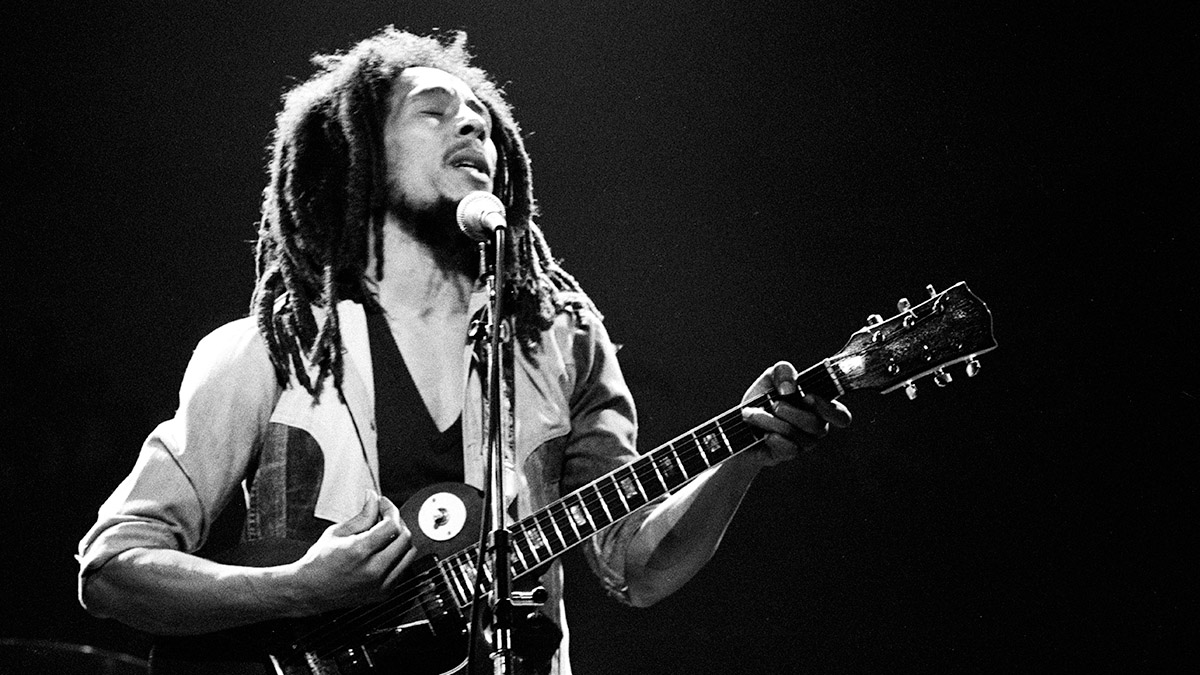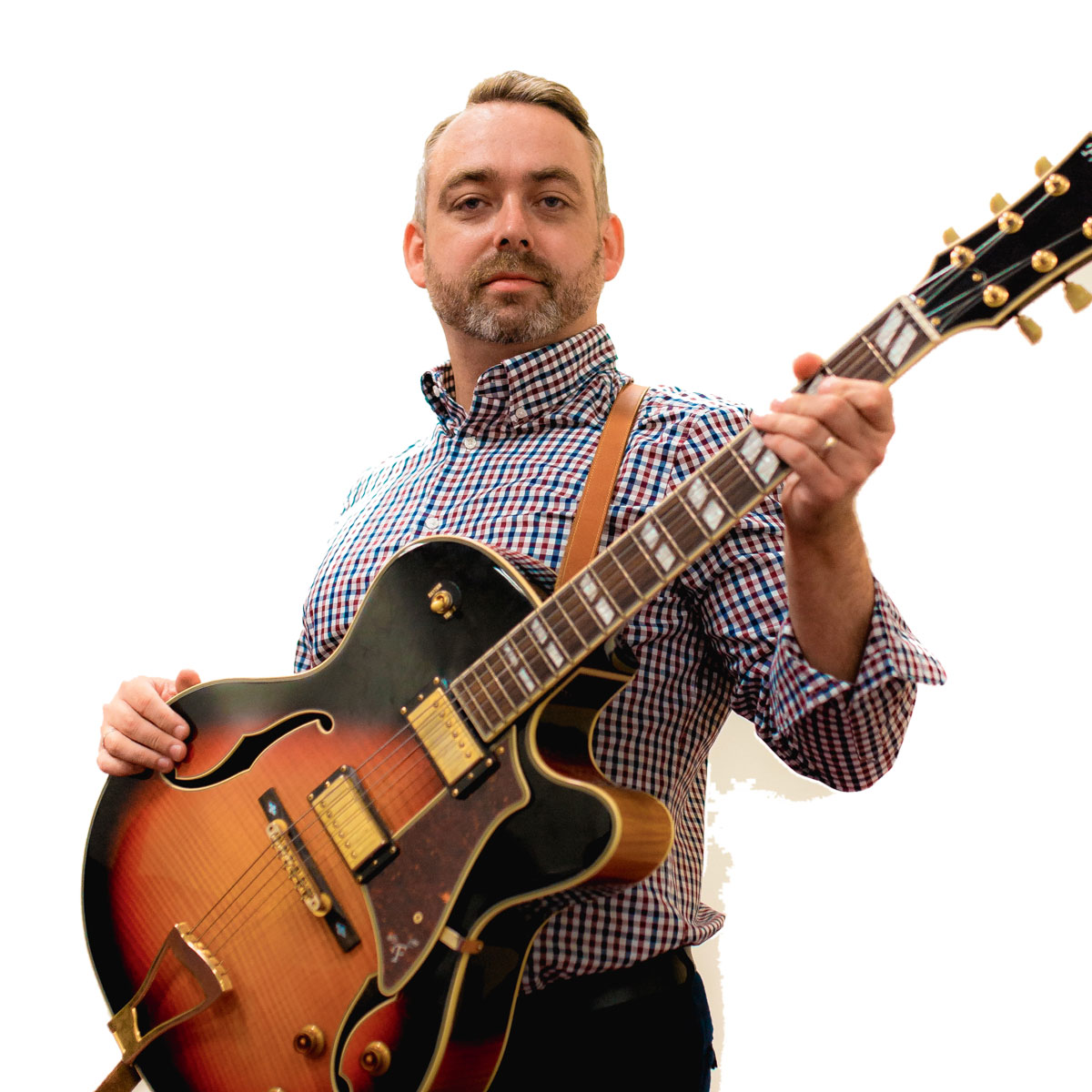Learn Bob Marley’s essential reggae rhythm styles
Master the rhythmic techniques of the most famous and best-loved of all reggae artists

In the late 1950s, Jamaican ska music came about as a fusion of traditional Caribbean mento, and R&B music from America. Guitarists would sometimes play on the ‘off’ beat with a light swing feel, and it was this off-beat, along with a lively tempo and a walking bassline that soon became known as ska.
Ska is still very much alive today, even though it’s gone through several waves in popularity. Certain ska artists slowed down the tempo in order to aid dancing. This created the style known as ‘rocksteady’, some time in the mid 1960s, and it was from this that reggae was born.
Reggae music is usually played at even slower tempos compared to rocksteady, although there are many similarities. One of reggae’s key elements is the ‘one-drop’ drum beat, which some attribute to Bob Marley and the Wailers’ drummer, Carlton Barrett.
The one-drop beat is characterised by the kick and snare accenting the third beat of the bar. This is unlike most contemporary music where the accent is on beats 2 and 4. Reggae bass playing, too, is sparse and syncopated, often outlining the chord tones.
The reggae guitar style offers many permutations. It features short, staccato chords and percussive strums played on the off-beat, and it’s this that’s known as ‘the skank’, or ‘skanking’. In order for the guitar to cut through the mix, the top three or four strings are often emphasised, lest the lower ones interfere with the frequencies of the organ and other keyboard instruments.
Some guitarists opt to play a full barre chord but not strike the bass strings, while others opt to play partial chords and triads, as I have in the examples and study piece.
One technique that Bob Marley often used was to use the guitar purely as a percussive instrument. He would form barre chords with his fretting hand but not actually push the strings down to the frets, thus creating a muted, percussive effect. Although the chords aren’t actually fretted, you can ever so slightly make out the main chord tones.
Reggae music can be played with either a straight or swung feel. I have chosen the latter for this article, which gives the music a bouncy and joyful feel. With regards to the tonality of reggae, it is played in Major and Minor keys in equal measure.
As a result, the initial five examples are in the key of A Major, while the study piece is in the key of A Minor. The main thing to focus on here is keeping the chords short, sharp and locked in with the bass and drums.
Get the tone
Amp settings: Gain 2, Bass 4, Middle 5, Treble 6, Reverb 3
Reggae rhythm and lead is almost always played using a clean tone. The skank rhythm usually sounds better on the bridge pickup, Bob Marley famously using a Gibson Les Paul Special with P-90s. Riffs and melodies, however, usually sound more appropriate using the neck pickup. Virtually any clean sounding guitar will work well; simply add light reverb.
Examples
Example 1. Basic skank style
This first example is an introduction to the skank style rhythm playing. Here, four-note chord voicings based on E and A shape barre chords are used. These should be performed using a downstroke and each chord should be played staccato.
This means short and clipped chords using soft fretting-hand muting; as soon you strike the chord, lift your fingers off of the fretboard ensuring to keep contact with the string itself.
Example 2. Percussive style
To play these examples form the barre chord shape for each chord but without pushing the strings down too hard; this creates a muted and percussive effect. The tab shows the fretting required but aim to have almost no pitched notes being sounded.
Example 3. Eighth-note skank style
This example builds upon Example 1 where an off-beat chord is played on beat 2& in each bar – this should be played using an upstroke. Don’t forget that these examples are played with a light swing feel so aim to give the upstrokes a little bounce.
Example 4. Eighth-note muted and unmuted skank
Here I have fused all the ideas so far to illustrate how the chords played on beats 2 and 4 can be quickly followed by a percussive strum on the off beat. Keep both hands relaxed and allow the fretting hand to bounce off of each chord, always remembering to maintain contact with the strings.
Example 5. Single-note lines
Single-note lines are often used in reggae and for the most part, double the bass line. These lines are often palm muted to create a slightly dull attack, as seen in this example. Make sure that this line locks in with the bass part, and you might want to flick over to the neck pickup for a nice variation in tone.
Study Piece
[Bars 1-16] These bars introduce the chord progression, which is in the key of Am. Notice how triads have been used rather than a four-note approach as seen in the previous Examples. I have opted to play this using the strumming pattern found in Example 3.
However, you should experiment playing this piece using all permutations of the skank reggae style, including the use of percussive hits, as shown in the previous Examples. During bar 9-16 you’ll find a variation on the triads used in bars 1- 8 to show how different triad inversions can be used.
[Bars 17-24] Here’s another single-note pattern with a triplet on beat 2. Notice how the first two beats are palm muted while the notes on beat 3 are not. This technique of fusing muted and unmuted notes helps to emphasis the line and make it stand out above the bass.
Get The Pick Newsletter
All the latest guitar news, interviews, lessons, reviews, deals and more, direct to your inbox!
Simon is a graduate of the UK's Academy of Contemporary Music and The Guitar Institute, and holds a Masters degree in music. He teaches, examines and plays everything from rock to jazz.
“There are so many sounds to be discovered when you get away from using a pick”: Jared James Nichols shows you how to add “snap, crackle and pop” to your playing with banjo rolls and string snaps
Don't let chord inversions bamboozle you. It's simply the case of shuffling the notes around









![Joe Bonamassa [left] wears a deep blue suit and polka-dotted shirt and plays his green refin Strat; the late Irish blues legend Rory Gallagher [right] screams and inflicts some punishment on his heavily worn number one Stratocaster.](https://cdn.mos.cms.futurecdn.net/cw28h7UBcTVfTLs7p7eiLe.jpg)


